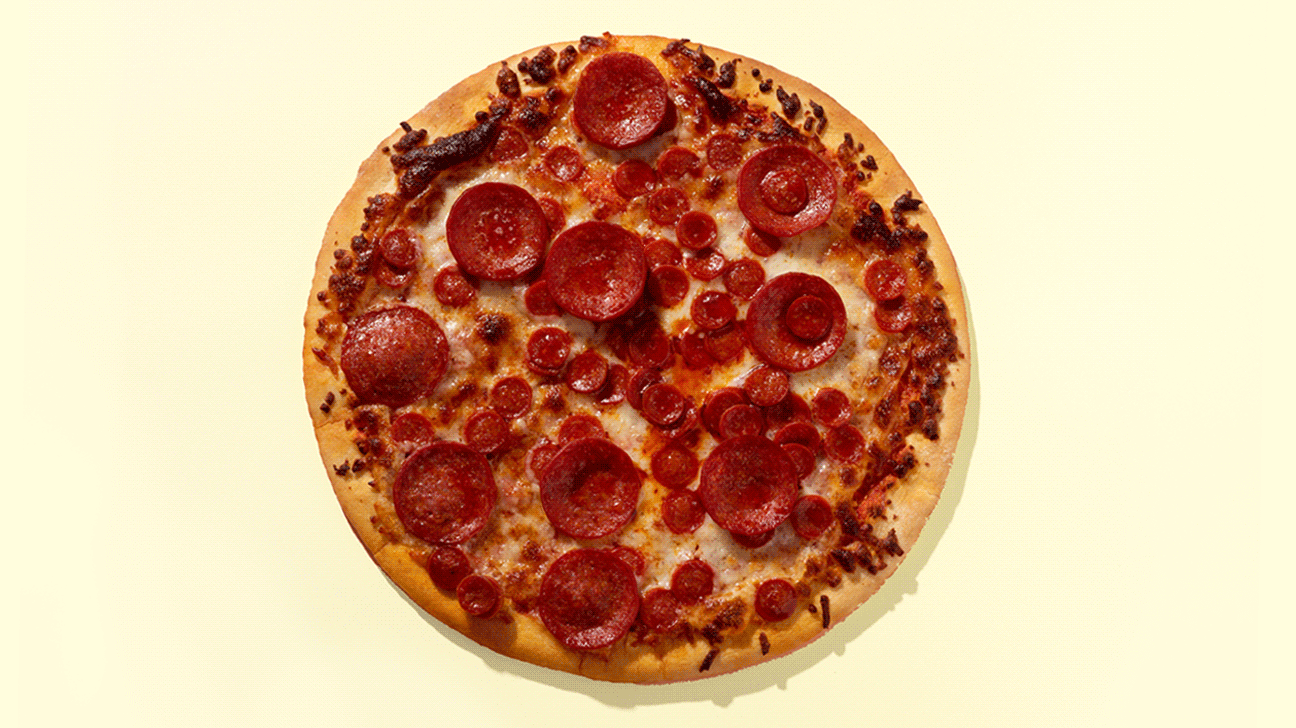If you’re looking for the pizza chain that will give you the most bang for your calorie buck, you may find yourself making the most nutritious choice among calorie-dense options. But occasionally, you just crave a greasy slice for a Netflix marathon that only the likes of Domino’s can provide. We know the feeling.

When it comes to the quality and ingredients in fast-food pizza, we decided to do a little research by taking a look at the nutritional content of a classic, medium-sized cheese pie at each of these four popular chains:
- Papa John’s
- Pizza Hut
- Little Caesar’s
- Domino’s
While none of the quantitative information was surprising (pizza is high in carbs and sodium), there were differences in which of these chains conveyed the information. Some boasted health claims or used a marketing spin, but no matter how you slice it, the nutritional lingo speaks clearly to each brand’s identity. Here’s a breakdown of each.
Note: Nutritional information is displayed per slice.

As you’ll see, the nutritional breakdown of the four major pizza chains in the United States is fairly comparable. Papa John’s is equally full of carbs and salt as its competitors (both of which are not bad for you, especially when eaten in a balanced diet).
However, Papa John’s has the highest sodium count for a basic cheese pizza. And yet, Papa John’s makes some of the boldest claims about the quality of its ingredients.
Here’s the breakdown:
- Their pizza is always made with dough that’s fresh, not frozen, with vine-ripened tomatoes.
- They use high quality, part-skim, mozzarella cheese.
- Their website describes the cheese as “real.”
- They offer a “Quality Guarantee.” If you don’t love their pizza, they’ll give you another one for a second chance.
A medium-sized cheese slice contains:
- Calories: 210
- Fat: 7 grams (g)
- Sugar: 3 g
- Protein: 8 g
- Sodium: 520 milligrams (mg)
As far as chain pizzerias go, Domino’s has its fair share of loyalists. As the biggest pizza brand and ninth-largest restaurant company in the world, they’ve clearly earned a lot of fans.
Domino’s nutritional information opts for subtlety. You can read the ingredient breakdown for any product. Here’s the lowdown on Domino’s:
- Domino’s offers a Cal-O-Meter, which allows you to measure every ingredient’s nutritional factor.
- They offer more than 34 million different combinations of offerings.
- You can customize a pizza order and choose between a variety of sizes, crusts, and toppings designed to fit your dietary needs.
A medium-sized cheese slice contains:
- Calories: 200
- Fat: 8 g
- Sugar: less than 1 g
- Protein: 8 g
- Sodium: 360 mg
Pizza Hut also has a customizable nutrition tool. You’ll also find information for food allergies, and there’s the “Hut Life Blog” that brings a unique touch to this franchise’s brand by telling customer stories.
Here are a couple more facts worth mentioning about Pizza Hut:
- They’ve been in business since 1958. That’s more than 40 years of perfecting their pizza.
- They claim that fresh tomatoes begin the process of becoming their sauce within 4 hours of being picked from the vine.
A medium-sized cheese slice contains:
- Calories: 250
- Fat: 10 g
- Sugar: 1 g
- Protein: 11 g
- Sodium: 450 mg
Little Caesar’s ties with Pizza Hut for calorie count, with slightly less fat and sodium but a little more sugar. It’s a toss-up, really. But in terms of marketing hype, Little Caesar’s focuses (for now) on their community involvement and contactless delivery options. And nutritionally speaking, they offer a straightforward approach to the facts. Here’s what you’ll find from Little Caesar’s:
- They offer a nutritional menu chart but do not include a calculator.
- Their pizza dough is slightly sweeter with less fat and sodium than their competition, Pizza Hut.
- They claim their pizzas are oven-baked at 475°F (246°C) to ensure food safety and the pizzas are never touched after baking.
A medium-sized cheese slice contains:
- Calories: 250
- Fat: 9 g
- Sugar: 3 g
- Protein: 12 g
- Sodium: 440 mg
If you’re going for broke with one of these pizza chains (or your local joint), there are ways to make it a little more balanced to power you through your day:
- Doctor it up with some veggies like green or red peppers, mushrooms, spinach or arugula, onions, eggplant, zucchini, corn, broccoli, sun-dried tomatoes, and yep, even pineapple.
- Add some lean protein like ground turkey, turkey bacon, grilled chicken, or chicken sausage.
- If the option is there, choose a whole-grain crust or a thin crust to shave off a few calories.
- Pair your slice with a big, green salad for additional micronutrients.
- Try making pizza at home!
Sometimes only a big slice will satisfy your movie night craving. And if you’re looking for the most nutritious option, it’s likely more about the toppings and crust than anything else. But you can work pizza into your diet without sacrificing it all to the pizza gods.
If you’re feeling ambitious to make your own pizza, here’s how to make the best pizza crust at home (you can even proof it in your Instant Pot).

